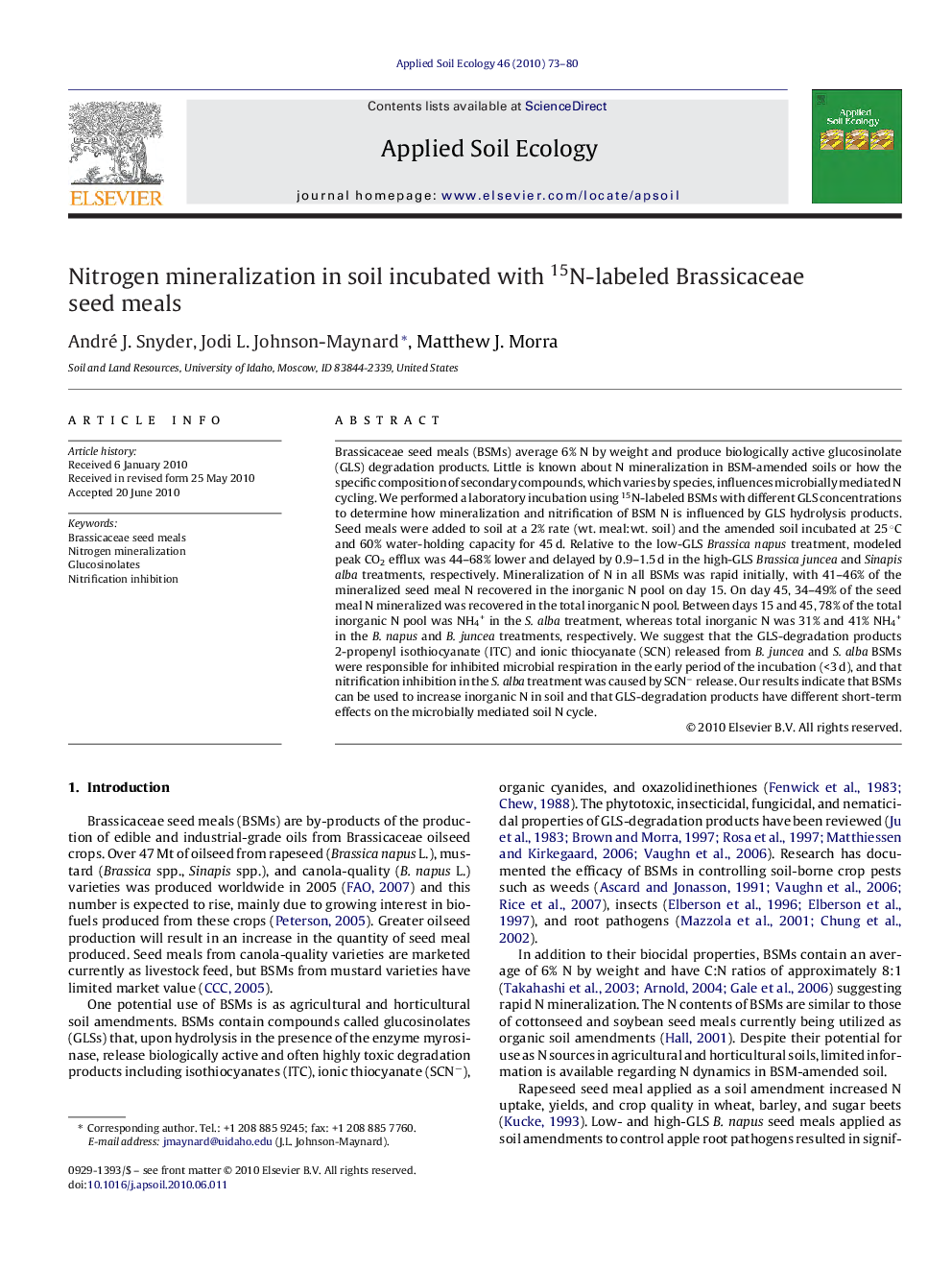| کد مقاله | کد نشریه | سال انتشار | مقاله انگلیسی | نسخه تمام متن |
|---|---|---|---|---|
| 4382770 | 1304230 | 2010 | 8 صفحه PDF | دانلود رایگان |
عنوان انگلیسی مقاله ISI
Nitrogen mineralization in soil incubated with 15N-labeled Brassicaceae seed meals
دانلود مقاله + سفارش ترجمه
دانلود مقاله ISI انگلیسی
رایگان برای ایرانیان
کلمات کلیدی
موضوعات مرتبط
علوم زیستی و بیوفناوری
علوم کشاورزی و بیولوژیک
بوم شناسی، تکامل، رفتار و سامانه شناسی
پیش نمایش صفحه اول مقاله

چکیده انگلیسی
Brassicaceae seed meals (BSMs) average 6% N by weight and produce biologically active glucosinolate (GLS) degradation products. Little is known about N mineralization in BSM-amended soils or how the specific composition of secondary compounds, which varies by species, influences microbially mediated N cycling. We performed a laboratory incubation using 15N-labeled BSMs with different GLS concentrations to determine how mineralization and nitrification of BSM N is influenced by GLS hydrolysis products. Seed meals were added to soil at a 2% rate (wt. meal:wt. soil) and the amended soil incubated at 25 °C and 60% water-holding capacity for 45 d. Relative to the low-GLS Brassica napus treatment, modeled peak CO2 efflux was 44-68% lower and delayed by 0.9-1.5 d in the high-GLS Brassica juncea and Sinapis alba treatments, respectively. Mineralization of N in all BSMs was rapid initially, with 41-46% of the mineralized seed meal N recovered in the inorganic N pool on day 15. On day 45, 34-49% of the seed meal N mineralized was recovered in the total inorganic N pool. Between days 15 and 45, 78% of the total inorganic N pool was NH4+ in the S. alba treatment, whereas total inorganic N was 31% and 41% NH4+ in the B. napus and B. juncea treatments, respectively. We suggest that the GLS-degradation products 2-propenyl isothiocyanate (ITC) and ionic thiocyanate (SCN) released from B. juncea and S. alba BSMs were responsible for inhibited microbial respiration in the early period of the incubation (<3 d), and that nitrification inhibition in the S. alba treatment was caused by SCNâ release. Our results indicate that BSMs can be used to increase inorganic N in soil and that GLS-degradation products have different short-term effects on the microbially mediated soil N cycle.
ناشر
Database: Elsevier - ScienceDirect (ساینس دایرکت)
Journal: Applied Soil Ecology - Volume 46, Issue 1, September 2010, Pages 73-80
Journal: Applied Soil Ecology - Volume 46, Issue 1, September 2010, Pages 73-80
نویسندگان
André J. Snyder, Jodi L. Johnson-Maynard, Matthew J. Morra,